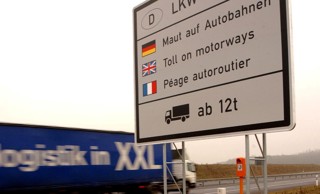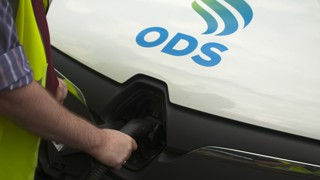By Mark Thomas, VP alliances at Ridecell
One of the most exciting and consistent changes I’ve seen is the way technology simplifies and improves even the most commonplace processes. Take the key, for example.
Managing a collection of physical keys, especially for a fleet of vehicles, can be cumbersome. It requires time, staffing, scheduling and even patience.
Physical keys are expensive to duplicate and even more expensive if lost, resulting in unnecessary costs and possibly a stolen vehicle.
Keyless technology promises to change all of that.
Digitizing the key, one of the smallest components of a vehicle, can play a crucial role in transforming fleet operations.
Switching from physical to virtual keys boosts efficiency, uptime, and compliance while increasing the safety of vehicles and drivers.
Improving fleet efficiency and uptime
Vehicles need regular maintenance to ensure they operate to their full capacity and lifespan.
Every hour a vehicle is out of service can mean lost revenues.
If I’m managing a commercial fleet, I can use keyless technology to remotely power up a vehicle and conduct a digital inspection before a driver’s shift.
This proactive approach helps me identify if there are any alerts or issues that need resolution before the driver arrives.
If the remote check results in a vehicle being deemed “unroadworthy,” I can assign the scheduled driver a digital key to a backup vehicle.
Waiting for drivers to notice there is an issue with their truck once the shift has started is not optimal for the driver, the fleet manager or customers waiting for their deliveries.
Unlocking critical compliance requirements
Commercial truck drivers often must balance state and federal transportation regulations with the pressure to meet tight logistical deadlines.
They can be tempted to continue driving past their allotted road hours.
As a busy fleet manager, revoking digital permissions to drive is much faster and easier than calling or chasing down a driver to take back a physical key.
Keyless technology is also the simplest way to ensure that unsafe or non-compliant vehicles aren’t being driven.
The ability to enforce compliance digitally helps me eliminate the cost of violations, increase fleet optimization, and protect drivers and vehicles while operating at maximum efficiency.
Enhancing driver and vehicle safety
Using keyless technology has another very important benefit – ensuring driving safety.
Combined with rules and automations, I can use digital keys to enforce common safety measures.
For example, I can create a workflow that prevents a vehicle from being started until a driver’s seatbelt has been secured or automatically lock doors once the vehicle’s engine is engaged.
Keyless technology also protects the vehicle.
If I’m managing last-mile drivers, I can help prevent theft of the vehicle and the goods inside by automatically locking a vehicle’s doors once the driver walks away.
I can also automatically unlock the door as the driver returns to the vehicle, resulting in faster and safer deliveries.
I can use digital keys, which are easily tracked and enforced, to grant drivers full access to a vehicle while limiting other staff members, such as maintenance and administration employees, to cabin or trunk-only access.
This reduces the risk of vehicles being misused or damaged.
Digital keys give me a wide range of control over a vehicle. It lets me know who is authorized to operate a vehicle and take preventative measures.
I can block unauthorized vehicle access, prevent a vehicle from restarting and immobilize a vehicle once it comes to a complete stop.
If a vehicle from my fleet is stolen, I can use these preventative measures, made possible through keyless technology and digitally controlled access, to reduce vehicle recovery time from weeks to hours.
Opening a pathway to transformation
Keyless technology gives us the ability to make real-time decisions to protect drivers and vehicles.
At any point in digital fleet operations, keyless technology is the first step in a true business transformation and adopting an in-depth fleet automation platform.
Common tasks such as scheduling maintenance, routine inspections and locating stolen vehicles can be automated, saving time and increasing productivity.
A comprehensive fleet automation solution helps streamline operations so we can do more of what matters most.





















Login to comment
Comments
No comments have been made yet.